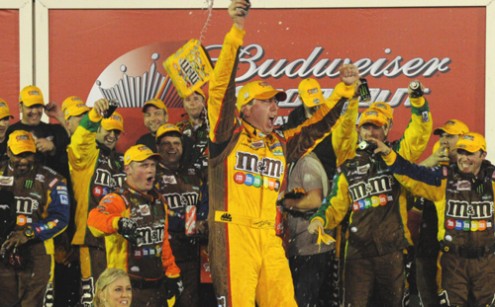INDIANAPOLIS
- Billed as “The Greatest Spectacle in Racing,” Sunday’s Indianapolis 500
shapes up to be one of the more intriguing races in recent memory. New engines
will be tested for the first time over 500 race-tortured miles. Newly designed
cars will create new aerodynamic drafting opportunities for drivers to exploit,
and for crews to adjust through numerous pit stops. Placed in the pressure
cooker atmosphere surrounding the world’s most prestigious race, you have a
great many storylines to follow. Below is what to watch for, whether you’re
settling into a seat at the track or a sofa in your house.
Will Power won’t win.
Okay, to be safe, let’s
say he probably won’t win. If the
IndyCars were running on the Brickyard’s old Formula One road course, Power
would be a prohibitive favorite, as his early season form has delivered multiple
appearances in victory circle. As he makes his road course success seem so routine,
it’s easy to forget exactly how hard he works at his craft. He works hard on
ovals too, but he’s still learning more so than doing, and that learning hasn’t
shown he can manage a race over 250 miles much less 500. Same goes with his
Penske teammate and pole sitter Ryan Briscoe. They will continue their learning
curve this year, and good results can be expected, just not the top result.
Helio Castroneves might.
Three time winner
Castroneves is the one Team Penske driver that has shown he knows what it takes
to lead the last lap. The key is to manage the car’s performance as the track
changes over the 3-hour plus race. This year, managing to track conditions is a
critical consideration, as the weather in Indy has been hot, humid and free
from rain. What that means is a track that will only get more greasy and slippery
as the race progresses, placing a premium on keeping the car set-up one step
ahead of a changing track.
Andretti Autosport - What a difference a year makes.
The Andretti name is synonymous
with Indy drama, and three generations of mostly futile efforts, save patriarch
Mario’s ’69 victory as a driver and Michael’s 2005 victory as an owner, have
only presented the story as some sort of package of cruel tricks. This was a
team that suffered through all sorts of problems last May, unable to even
qualify the entire team. This year,
drivers Marco Andretti, Ryan Hunter-Reay, James Hinchcliffe and Ana Beatriz
have hovered at the top of the time charts most every session. While
Hinchcliffe starts just inside Hunter-Reay on the front row, look for RHR to outshine his teammates on race day.
Saving fuel begins with the first drop, not the
last.
The Indy 500 is the
biggest race in the world, and a race worth taking a gamble if the opportunity
arises. Therefore, the last pit sequence
almost always features cars trying to stretch fuel mileage and “steal” a
victory. When it comes to mileage, no one does it better than Panther Racing, a
team who has parlayed the combination of fuel strategy and strong cars into
four straight 2nd place finishes in the 500. Panther’s strategy
starts with conserving fuel from the first lap of the last stint, and gives its
driver J.R. Hildebrand a chance to claim the victory that so cruelly eluded him
last year. Panther’s lessons learned from fuel conservation runs can’t be
overestimated, as it still seems to be an elusive concept to even series
stalwarts like Target Chip Ganassi.
Ganassi not quite on target, but not to be
overlooked.
The Target Chip Ganassi
duo of Scott Dixon and Dario Franchitti has struggled early this season, and
the month of May at Indianapolis has been no exception. While certainly not
favorites for Sunday, they are not to be discounted entirely. Both are previous
race winners and both practice race craft at the highest of levels. But, both
are handicapped with a Honda engine down on power relative to the Chevrolet.
Look for them in the top ten, but not for the win.
Because good guys do finish first. Sometimes. One time.
No winner would tug the
sentimental heartstrings as much as Tony Kanaan, who deserves an Indy 500
victory if only as a lifetime achievement award for being one of the engaging
faces of IndyCar during its difficult post-CART transformation. Kanaan has won
almost everything else, including a season championship, but has been jinxed at
the Brickyard despite regularly leading laps and running strong. He’s had
stronger cars and teams at Indy before, only to fall so tantalizingly short.
What makes this year different for Kanaan and his KV Racing team? It’s this
year, and with a new cars, new engines, and new drivers, it’s got to be
someone’s year, so why not his?
Race along with Ray on
Twitter @RayHartjen.








